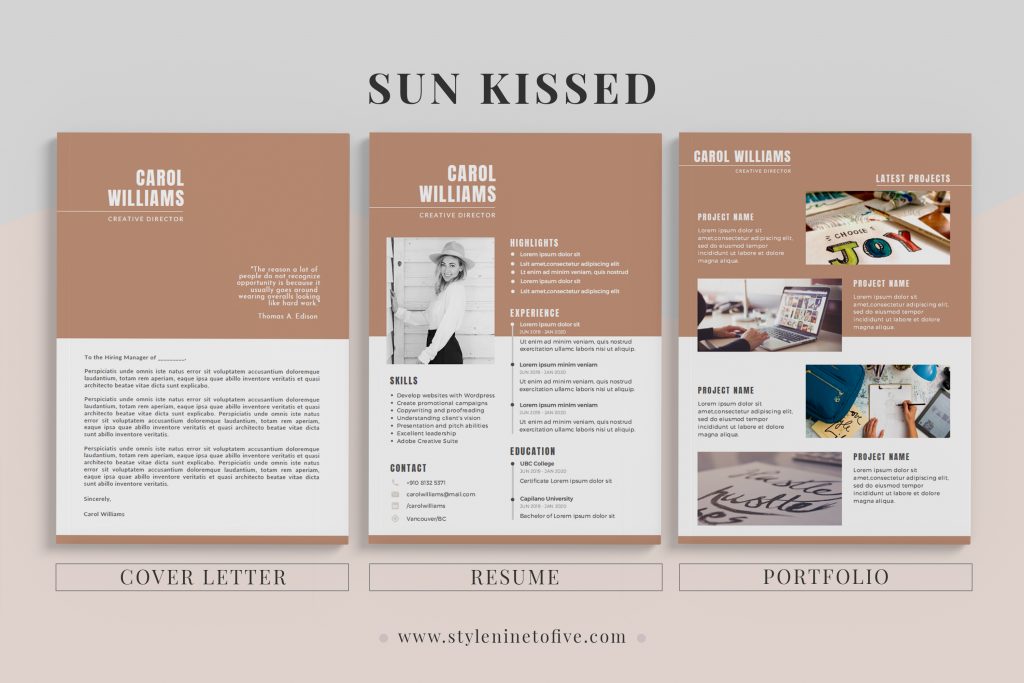
It’s the requirement that creative job-seekers dread: the portfolio. It can become a huge stressor as you work on your application – which pieces should you be including? What will this company, specifically, want to see? Which work samples show your talent the most?
But stress no more – in only three steps, you can tailor your portfolio to perfection! Here’s how:
Show Your Best Work
You’ve done plenty of work you’re proud of, but you need to limit how much of it can go into your portfolio. Pull out the highlights and anything most reminiscent of your usual work, or show your range by sharing different styles you’re experienced in. “Your portfolio should be like your resume – showing all that you’re capable of without going overboard and including too much,” says Style Nine to Five’s Founder, Christie Lohr. “Showcase your best work, not necessarily every single thing you’ve ever done.”
Even if you have a lot of portfolio-worthy work, cap your portfolio at around 10 different pieces, but that’s a maximum – the less you can show while still selling your talent, the better. Too many pieces – even if all of them are amazing – will only weigh your portfolio down by giving the hiring manager too much to look at. “Make sure it’s really tight and your skills will shine through without bogging the hiring manager down with too much information,” says Christie. Hiring managers may have a lot of portfolios to review and will likely give all of them a quick glance unless something truly draws their attention. So, limit your portfolio to the best of the best.
However, if you want to make sure the hiring manager doesn’t miss anything, offer them the opportunity to look for more. “Make sure to link your social pages and website so they can easily click and see more,” suggests Christie. Keeping your portfolio short and sweet will give them a preview that’ll entice them to dig through your website and social media to see the rest.
Create a Clean Design
With any application, portfolio or not, it’s important to keep your personal brand intact and make sure everything you submit is visually cohesive. If you’re working in a creative industry, this becomes even more important to your application. That being said, don’t let the way you design your portfolio take away from the actual pieces in it. “A great portfolio is designed to show off your work, not compete with it. Keep the design as sleek as possible,” says Christie.
That being said, it should still match the rest of your application – just be natural about it. “Make it a cohesive package with the rest of your application assets,” advises Christie. “Don’t be afraid of incorporating subtle colours or graphics, especially if you’re using them on your resume and cover letter.” If the rest of your application package uses designs or imagery, you might not want to put those on your portfolio if things will look too busy, but you can pull colours from them so there’s still a match.
Tailor It Every Time
Just like you write a new cover letter for every job you apply to, you should be customizing a new portfolio for every job you apply to. “Hiring managers want to see that you’ve gone the extra mile and that you really fit with their brand,” says Christie.
Each company or client will have their own style and they need to know that any prospective hire is capable of it. “You’ll want to tailor your portfolio to each company you’re sending it to. For example, if you’re applying to a sustainable fashion brand, your portfolio might contain different samples of your work than it would if you’re applying to an edgy boutique,” Christie adds. This will also help you narrow down what your portfolio should include – your best work, but also work that aligns with the company’s aesthetic and overall vibe. The hiring manager will see that you’re a good fit with the brand, and also that you’re familiar with their company to begin with.
Hiring managers want to see your best work, work that fits their brand, and on top of that, your personality. Every time a portfolio is required of you, sort through your prior work to find an array of pieces that fit the bill, feature them on a sleek, yet subtle background, and you’ll be set to impress!
Want to cut down the time you spend on your portfolio? Get yourself a Style Nine to Five Job Application Template!
Emily Morrison is a media professional with a passion for writing, film and popular culture.
Feature Image: Adobe Stock

